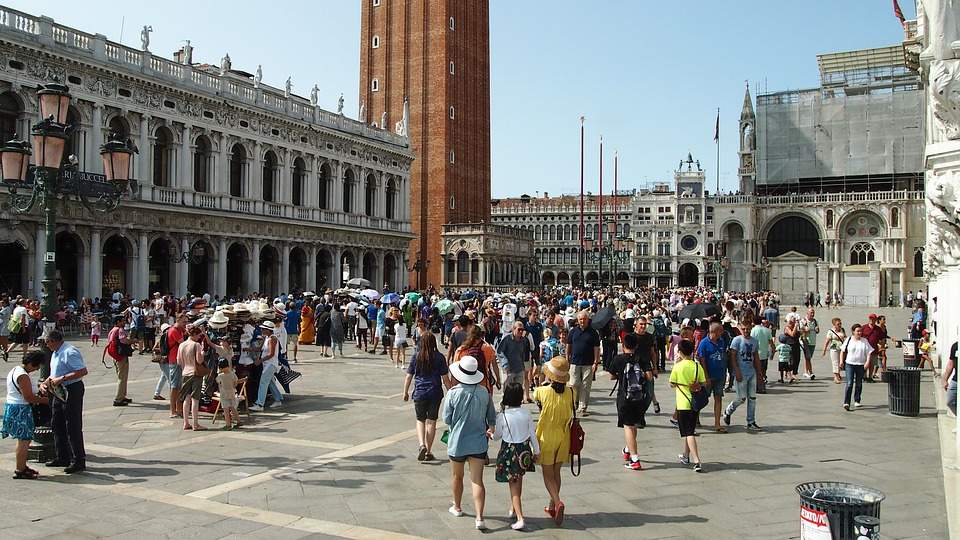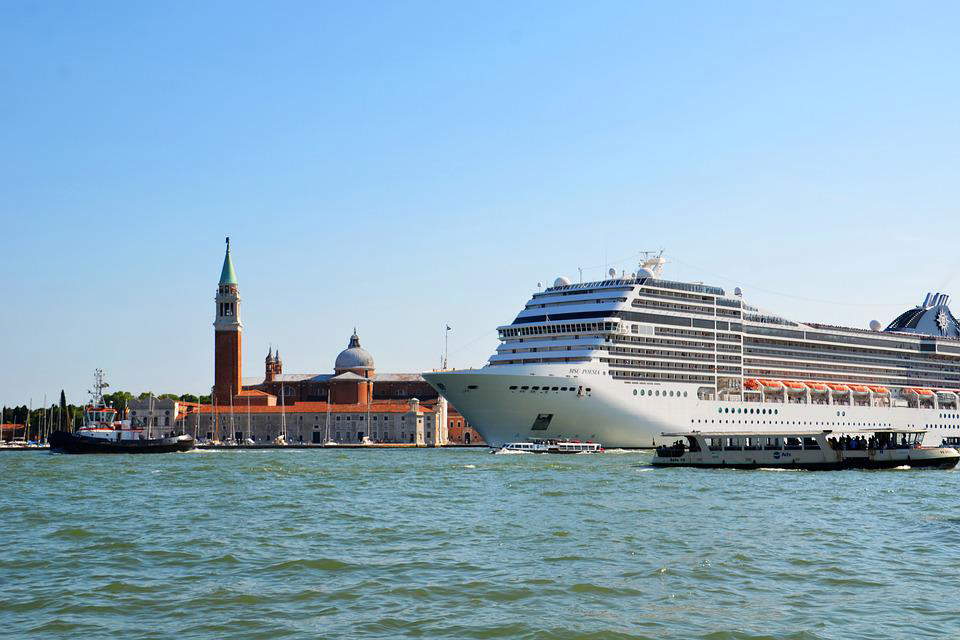The year 2022 promises to be a watershed year for tourism in Venice. In the space of a few days, two major pieces of news have been delivered in the run-up to the summer season: first Mayor Luigi Brugnaro launched the idea ofreservation-only entry, then came directly from Miami that the major cruise lines will for the first time exclude Venice from their docking itineraries.
It is necessary, however, to go in order. After the days of Easter and April 25, withVenice taken by storm by 140,000 tourists, so much so that the commander of the traffic police spoke of “delirium” with the Ponte della Libertà practically blocked and queues for public transportation, the mayor, on his Facebook page, took theopportunity to vindicate the goodness of his idea about blocking indiscriminate entry to the lagoon in order to institute closed-entry booking from this summer and then move from next year to a real entrance fee.
The municipality’s intention would be to have non-residents book entry to the city through a special website managed by the municipality’s Smart Control Room: for the first year of the experiment, it will not be mandatory, and no penalties are envisaged. Those who have already booked at a hotel will be exempt, while those who do not stay overnight and make reservations will be able to take advantage of a number of discounts on activities in the Lagoon or discounts on waiting times. The package will be unveiled very soon and accompanied by a major communication campaign. It will take six to eight months to calibrate the system, and from June 1, 2023, people will pay a ticket to enter, excluding residents of the metropolitan city of Venice. It would be the first example in the world to provide an entry quota in a municipality.


After all, the problem of large, perhaps excessive, tourism exists, and alongside this is the problem of the underground. The Smart Control Room in fact analyzed the numbers of the last ten days of April, discovering the numbers of undeclared tourism, which stays in extra-hotel facilities in the black, and which is quantified at 20 thousand presences at Easter alone: many would be the tourists who stayed overnight in the city and who would be detected thanks to the cross-referencing of data with cell phone signals. The Corriere del Veneto reported the news: according to data from phone operators, 101 thousand tourists stayed in Venice during the Easter weekend, but there are not so many beds in hotels in the city.
In fact, the official numbers of lagoon hospitality speak of 81,849 beds in the entire municipal area, of which 32,562 were in hotels and 49,287 in non-hotels (i.e., room rentals, B&Bs and vacation homes). Approximately 20,000 people, therefore, would have stayed in the black or in some unregistered facility. The Corriere del Veneto also explains how this calculation was arrived at: “every day at four o’clock in the morning the Smart Control Room (a real state-of-the-art technological system) checks the number of cell phones present in the city, that is, it analyzes the cell phones that are found to be hooked to the cells. This is also how it counts who is staying at the Venetian lagoon city. For example, we know that on Easter Monday there were 35,990 residents at home in the city, in addition to these we have to subtract children, switched-off cell phones and the few people who still do not have a smartphone so we arrive at the number of about 20,000 people who were in Venice at night but were not registered in a facility. Where did these people sleep? Some are ironizing that they may have slept under some of the city’s bridges, but that is obviously just a joke. Many are reflecting on how these people are staying in unregistered facilities that are not paying taxes and evading tax.” This investigation has taken the debate about closed-entry even higher by seeing compulsory booking also as a way to get clarity on the numbers and be able to plan policies by having the real pulse of the situation and avoid the evasion of the tourist tax.
On the cruise front, however, the news of the major companies’ abandonment of Venice came from the president of Federagenti (the association of Italian shipbrokers), Alessandro Santi, reporting on what emerged from the ongoing Seatrade Cruise Global in Miami. “With Venice,” he said, “the iconic and most important home port in the Mediterranean disappears: as was announced, the transitional phase indicated by DL 103, which provided for actions to safeguard Venice and jobs, has produced nothing concrete. Neither has been successful: the city is assailed by hit-and-run tourism and the quality and added value of organized and high-spending cruise passengers has been rapidly replaced, with enormous multiplicative factors, by day visitors, ’bachelorette and bachelor parties’ and alcoholic raids. With the obvious consequence of hundreds of workers waiting for months for support and the companies legitimately fleeing.” The blockade of the port of call has led to the removal of companies in favor of Trieste and Ravenna.


While for the cruise industry as a whole, which as anticipated last week gathered in Miami for the Seatrade Cruise Global, the international association that brings the companies together (the Clia - Cruise Lines International Association) expects “total passenger numbers to recover and exceed 2019 levels as early as 2023, with total global cruise passengers then expected to grow by 12 percent by 2026 compared to pre-cruise levels.” This is stated by Kelly Craighead, president and CEO Clia. And analyzing itinerary scheduling shows exponential growth in the number of cruise ship calls at Italian ports, which realigns the trend to 2019. This is stated by Sergio Senesi, president of Cemar Agency Network in Genoa, who quantifies the number of passengers handled in Italian ports at the end of 2022 at about 8 million 800 thousand (+340% compared to 2021,-26% compared to 2019). Ship calls will rise to 4,824 bringing this figure back to pre-pandemic levels (4,895 in 2019). In 2023, passengers handled could exceed 12 million returning to 2019 record levels. In 2022 there will be 75 Italian ports involved in cruise traffic with Civitavecchia followed by Genoa and Naples.
Finally, traffic in Venice is decreasing: the blockade of the port of call has led to the departure of the Companies in favor, as mentioned, of Trieste and Ravenna. Among the Companies that will move the most passengers to Italian ports in 2022 are MSC Cruises, Costa Cruises, and Norwegian Cruise Line, followed by Royal Caribbean and Celebrity Cruises. The busiest months were October (706 calls), May (660 calls), September (615 calls) and July (573 calls). The busiest day was October 9 with 35 ships in Italian ports and 82 thousand passengers handled. For regional cruise traffic, Liguria is first, followed by Lazio, Sicily and Campania.
Warning: the translation into English of the original Italian article was created using automatic tools. We undertake to review all articles, but we do not guarantee the total absence of inaccuracies in the translation due to the program. You can find the original by clicking on the ITA button. If you find any mistake,please contact us.